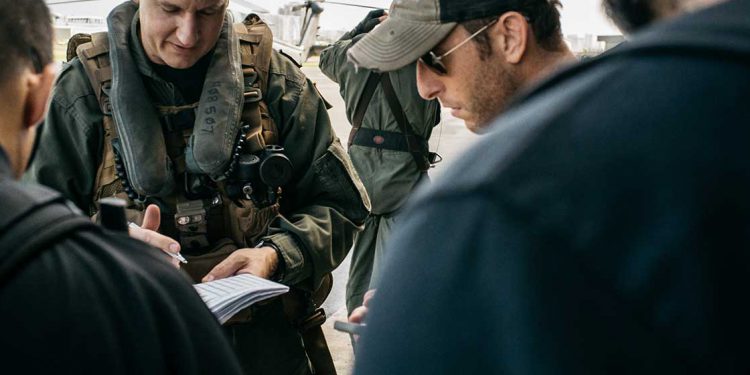public safety

Tech Spotlight Series: Veterans improve disaster readiness and make a better “bad day” for communities
Fix it in post! That’s often heard in the film industry. But industry professionals know that any work done after the fact is far more expensive than good planning and preparedness. When it comes to disaster readiness, professionals likely know the same is true. Well-informed training, solid planning with local

Maintaining situational awareness off the grid a hot topic at IWCE 2020
When disasters damage or destroy terrestrial communications networks, first responders need rapidly deployable equipment to maintain situational awareness and communications. This was one of the central discussions during the 2020 International Wireless Communications Expo (IWCE 2020), a virtual event that brought together critical communications technology providers, practitioners, and other industry

Podcast: Source One MRO discusses delivering essential communications and supplies to the frontlines during COVID-19
Whether it’s the current global COVID pandemic, wildfires, hurricanes, or other crises, national emergencies show us who the heroes are. The Last Mile Podcast recently sat down with two heroes, Source One MRO’s Brad Bihun and Keith Cowell, who are providing solutions to help first responders stay safe within the

Podcast: LCG Holdings on connecting Puerto Rico
The Last Mile Podcast features in-depth interviews with operators on the front lines of remote and austere missions around the world. Rafael Bobe, owner of LCG Holdings in Puerto Rico, knows the value of reliable and resilient communications networks. He was on the ground during Hurricanes Irma and Maria in

Whitepaper | Disaster response communications in the age of COVID-19
COVID-19 presents an immediate challenge to emergency management organizations responding to secondary disasters like hurricanes, floods, and wildfires. As ventilators, tests, and personal protective equipment flood our newsfeeds, we can’t forget the basic need underlying any disaster response: communications. With threats from cybersecurity to climate change, communications challenges were mounting

Tech Spotlight Series: goTenna’s transition from consumer to tactical-grade mesh networking devices
For this month’s spotlight, we interviewed Raphael Abrams, the lead of hardware engineering at goTenna. As the company’s first employee, he developed goTenna’s two generations of consumer hardware and has since led the transition to their tactical-grade goTenna Pro line. Today also happens to be the one year anniversary since

Four common objections to smartphone adoption, and how to address them
Public safety agencies and organizations across the globe are becoming increasingly smartphone-centric. In a recent webinar hosted by the International Public Safety Association, panelist Dale Stockton said, “When you consider the sheer utility and overall functionality, [smartphones] have become the tech equivalent of the proverbial Swiss Army knife.” It’s this

Webinar | How to implement a mobile first strategy for emergency management
Mobile devices and applications are increasingly critical to day-to-day public safety operations, but many organizations are unprepared in the event cell phone connectivity — and access to these new tools — becomes unreliable or unavailable. New advancements in mobile and wireless communications are now allowing emergency response and recovery teams

Tech Spotlight Series: TRX Systems on personnel tracking in GPS-denied environments
In previous articles on The Last Mile we’ve discussed the usage of mobile mesh networking for basic connectivity. Whether that be for the use of public safety officials or military personnel, mobile mesh networking bolsters situational awareness in areas or instances where radio signals are typically denied. But what happens

Podcast: Bringing satellite, mesh and mobile together for coordinated emergency response
As we’ve discussed in previous articles on The Last Mile, natural disaster and emergency response situations are not only devastating for their victims, they can be challenging for first responders. This is especially true in wildfires – which move unpredictably and quickly – and hurricanes – which are seemingly increasing



